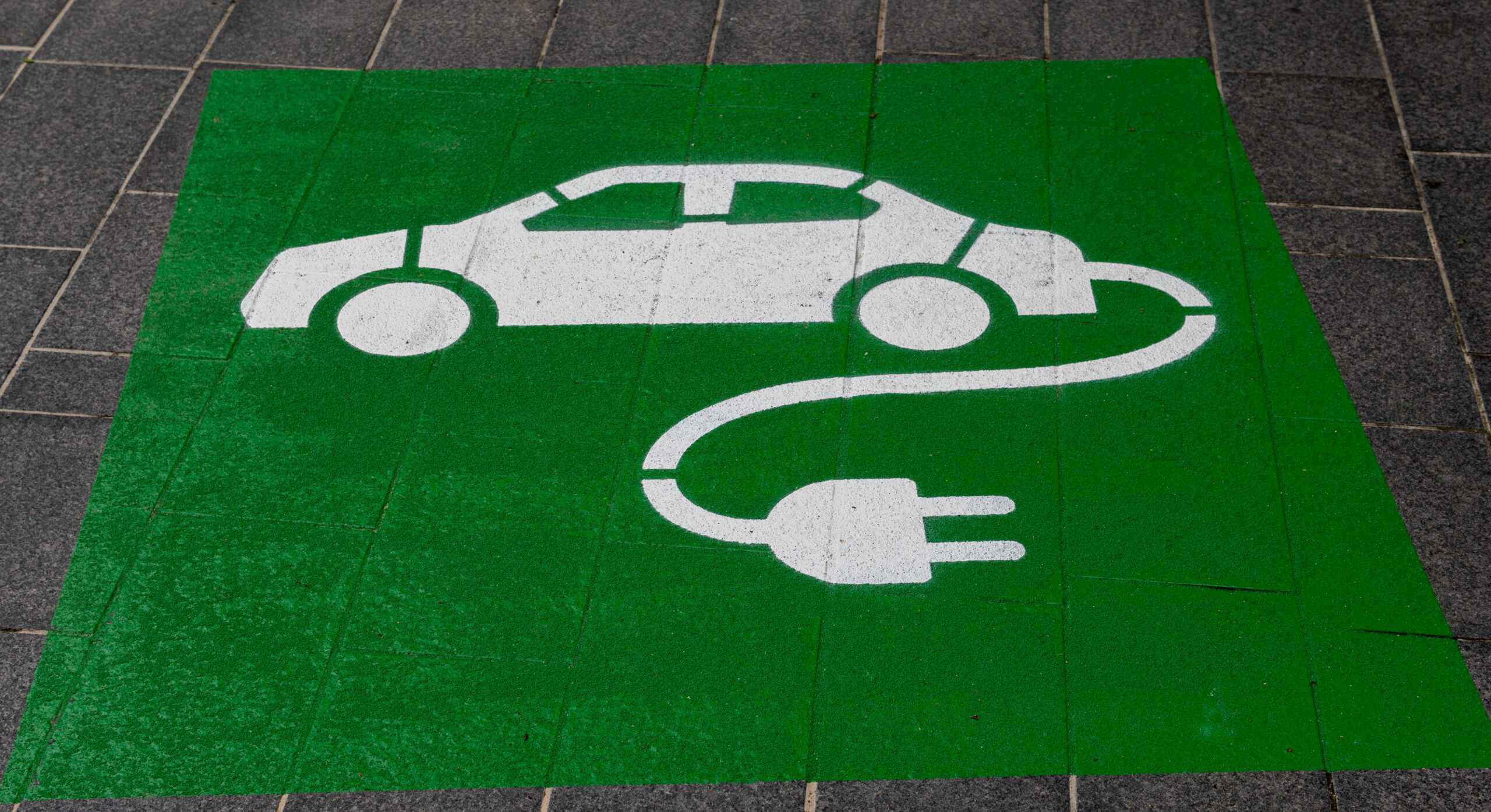Why Do Electric Vehicles Require Less Maintenance?

EVs Leave Behind the Messy Mechanics of Gas Vehicles. Electric vehicles (EVs) fundamentally operate by utilizing a battery pack, comprised of cells that provide power to one or more AC motors. In contrast, traditional gasoline vehicles rely on an internal combustion engine situated in the engine compartment. EVs have a streamlined design in terms of engine components. In this article we will review the similarities and differences between the two and answer many of the questions you may have.
Since EVs do not have an engine, it significantly reduces the number of parts needed. For example, no spark plugs no fuel injection no transmission; fewer parts that can break and need to be replaced. This frees up a lot of space as well since the AC motor on EVs sits on the axle next to the wheel and the battery is under the floorboards. This allows a lot of the front engine bay to be converted into storage or a frunk as some call it.
Transmission components of an Electric Vehicle
Do electric cars have transmissions? Simply yes but not in the same way as traditional gas vehicles. Electric cars only have one gear. EVs provide instant torque and can sustain high torque and efficiency throughout a wide range of RPM or revolutions per minute. As opposed to gas vehicles which are only efficient in a limited range of RPM. Because of their wide torque range and efficiency a transmission is unnecessary and would only add complexity, cost and weight. Eliminating the unnecessary transmission eliminates a component than can break and need maintenance. No more transmission fluid!
Since there is no transmission do electric vehicles have any equivalent to a manual transmission? Because of the design for simplicity and because electric motors are so smooth there is no direct relation to a manual transmission found in gas or internal combustion engine vehicles. Tesla offers a Track Mode which does allow you to adjust some of the features in the vehicle such as the regenerative braking system, stability control and power distribution but no direct analog to manual transmission.
One Pedal Mode
A unique feature of EVs is one pedal mode. Simply this allows you to both accelerate and decelerate the vehicle with only the gas pedal. It will even come to a complete stop without using the brake pedal. Now in cases of stop and go traffic where everyone slams on the break you will still need to use your break pedal. But when driving in town or in normal traffic on the freeway you can use one pedal mode to avoid using the brake pedal most of the time.
What are some benefits of one pedal mode? Well first off it saves your breaks. When using one pedal mode it uses the motor to slow down and only engages the breaks to stop the vehicle. This allows you to extend the life of your break pads. On top of slowing down the vehicle, the regenerative braking feature helps recharge the battery.
Power Components of an Electric Vehicle
Do electric vehicles have alternators? Nope, the alternator was used to charge the 12 volt battery in the vehicle of an internal combustion engine. The engine was connected to the alternator via a belt and the spinning of a motor in the alternator generated power which charged the battery. Because there is no combustion engine in electric vehicles there is no way to push power back to the 12 volt battery via this method.
Electric vehicles still do have a 12 volt battery which powers components such as the radio and headlights. But instead of using an alternator there is a DC/DC converter which is actually more efficient than an alternator. The DC/DC converter takes the high voltage of the EV battery pack and converts it to 12 volts to keep the small 12 volt battery charged.
Do electric vehicles use fuses? Yes electric vehicles do have fuses and its arguable that they are even more important in electric vehicles than in gas vehicles. They are used for similar reasons as gas vehicles, to prevent overcurrent going into sensitive electrics. The fuse will break if there is too much current thereby stopping the flow of electricity and protecting the electronics. They are also used in both types of vehicles to protect against fires.
One difference with electric vehicles is they use very high capacity batteries so EVs use more fuses rated for higher voltages to protect the systems. EVs also have a unique use for fuses in circuit isolation. Electric vehicles often have more complex electrical systems compared to gas vehicles. They may have multiple high-voltage circuits and subsystems. Fuses in electric vehicles are strategically placed to isolate and protect different circuits within the vehicle. This facilitates troubleshooting, maintenance, and repairs.
Electric vehicles because of their complexity and powerful batteries have more safety standards regarding the electrical systems and therefore have a need for fuses designed to meet those safety standards.
Do Electric Vehicles need to be warmed up before driving in cold winter temperatures? No warming the vehicle is not required to before driving your EV in winter temperatures. Your EV will be ready to drive immediately even in cold temperatures. Cold temperatures can lower range because it causes increased resistance in the battery making it less efficient. Also be aware that you will most likely see reduced range when its very cold out because the heating element requires a lot of energy and will be a drain on your battery when used.
Cooling Components of an Electric Vehicle
Do electric cars have radiators or radiator fluid? Yes electric vehicles still requiring cooling and use both a radiator and coolant. The air conditioner, the batteries and the motor are the main components requiring cooling but even some smaller parts such as the onboard computer receive cooling from the radiator. The cooling needs for electric vehicles are significantly less than was required for gas or internal combustion engine vehicles. This means that the radiators are smaller and the coolant lasts significantly longer. Tesla says you don’t need to change the coolant until 150k miles.
Engine Components Of An Electric Vehicle
Do electric cars use oil? Yes but not in the same way as gas vehicles. Gas vehicles needed a lot of oil to keep the internal combustion engine lubricated. The oil would degrade and get contaminated fairly quickly and need to be replaced every 3,000 miles or so. With electric vehicles they use significantly less oil.
Typically only needed in the drivetrain to lubricate gears and bearings. At one point Tesla recommended replacing the gearbox oil but has since removed that recommendation realizing it is not necessary. The motor has some lubricant contained inside but it does not need servicing. So while there is oil used in electric vehicles it is not part of the maintenance schedule as it does not need to be replaced.
Do electric vehicles have Catalytic Converters? No since EVs are powered by motors connected to a battery pack they do not create any emissions. The catalytic converter is necessary in gas vehicles to facilitate chemical reactions that break down and transform harmful pollutants into less harmful substances. Since EVs do not generate any pollutants the catalytic converter is not necessary.
do electric vehicles make noise when backing up? Yes all EVs make backup noises when backing up below 20mph. The US has legislation requiring EVs to make backup noises. For the most part they all make a similar electronic hum sound when backing up. At one point Tesla allowed drivers to pick their own backup sound including some wild ones like goat bleats and fart sounds. The NHTSA has decided to ban than and now you no longer get to choose.
Braking Components Of An Electric Vehicle
Electric vehicles have a unique system called Regenerative Braking. Sometimes called Regen. Most EVs and Hybrids have this feature. Basically the motor runs in reverse, this not only helps to slow down the vehicle but it sends a small amount of energy back into the battery. Giving you a little extra charge to increase your range in city and stop go traffic situations.
Regenerative braking has an added benefit of saving your brake pads, similar to how down shifting in gas cars helped slow the vehicle without the use of brakes. As stated above you can get the most regen possible when in One Pedal mode because it allows the cars computer more control over how the braking is applied and it can increase the efficiency of the braking system.
Do Electric cars need brake fluid? Yes similar to gas vehicles electric vehicles employ brake pads and brake fluid to help stop the vehicle. Typically however the brake pads are a secondary means of stopping the vehicle with the Regenerative braking system being the primary method used to stop the car. The brake pads only engage if more stopping force is required.





